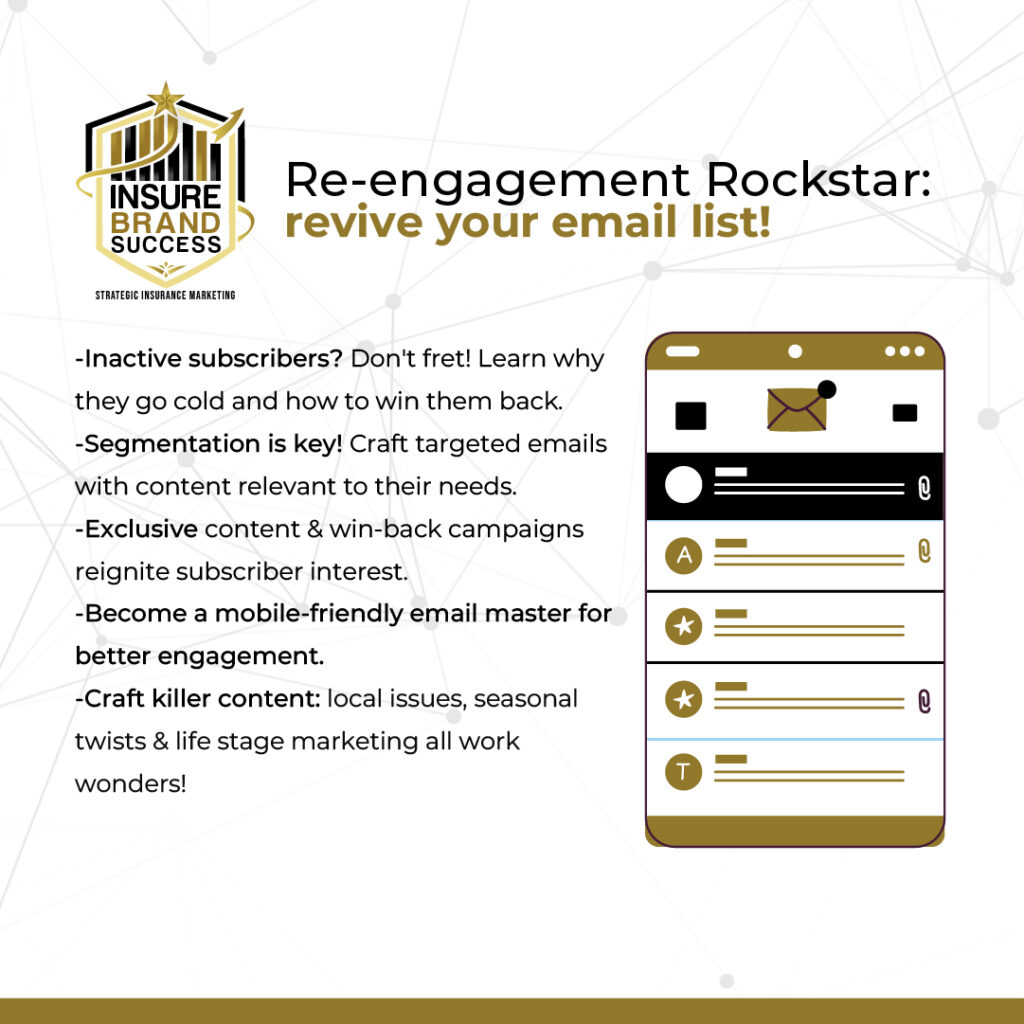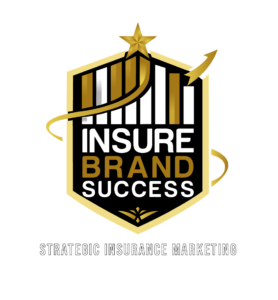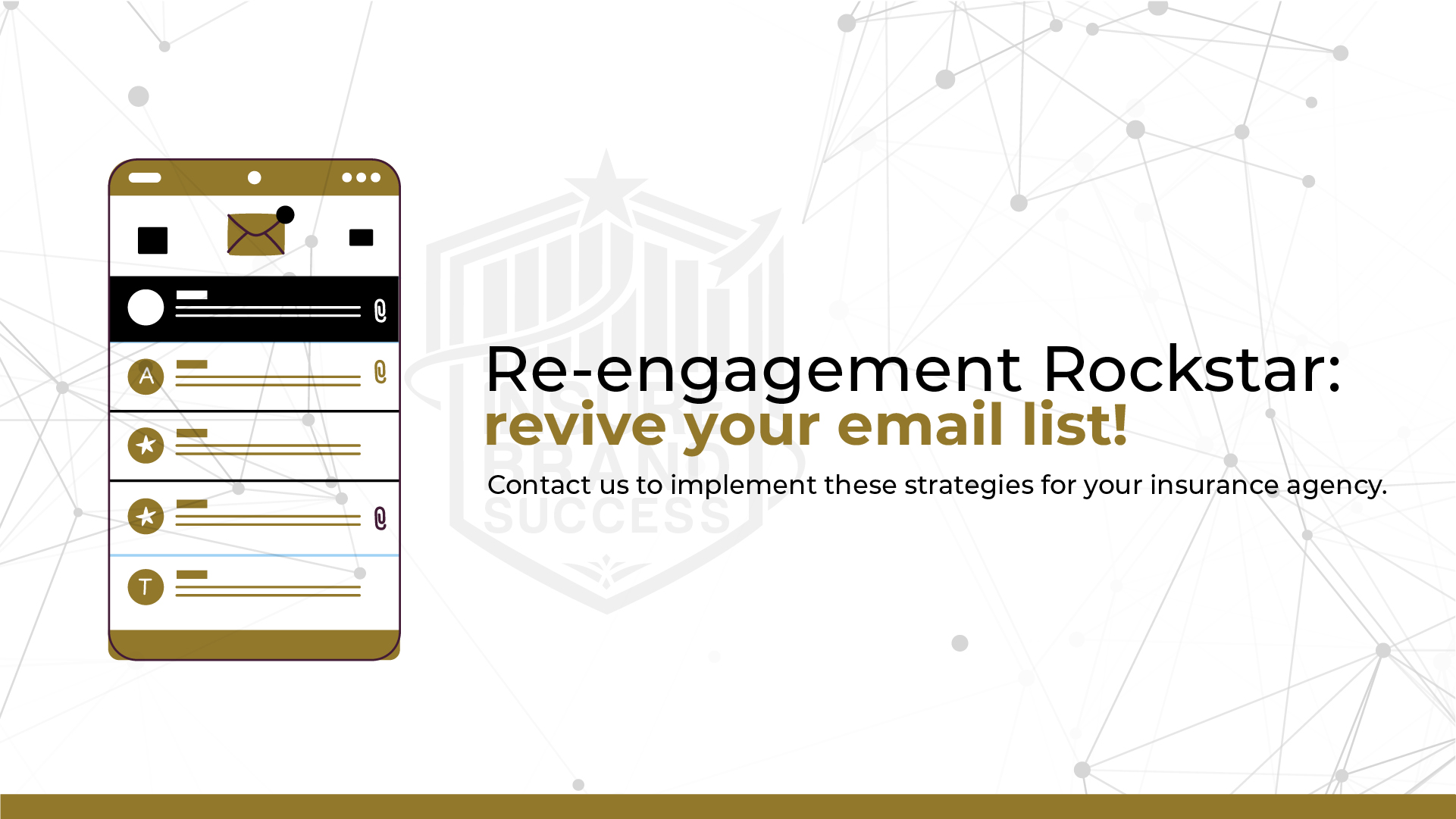We’ve all experienced the frustration of sending out carefully crafted email campaigns only to see little engagement. For insurance agency owners and managers, inactive email subscribers represent untapped potential – people who once showed interest but have become disengaged. It’s a missed opportunity to re-engage them and turn them into loyal clients.
But don’t worry, this blog post will help you transform your email marketing strategy with practical tips on how to bring back those inactive subscribers and re-ignite their interest in your insurance offerings.
Why Do Insurance Subscribers Go Inactive?
Before we discuss strategies for re-engaging your email list, it’s crucial to understand the reasons subscribers might go cold. Here are some common causes of inactivity:
- Irrelevant content: If your emails don’t address the specific insurance needs of the subscriber, they’re likely to be ignored.
- Too frequent emails: Constantly bombarding your audience with daily messages can feel intrusive.
- Lack of value: Emails focused solely on selling services without offering educational content can push people away.
- Mobile-unfriendly design: More than half of all emails are opened on mobile devices. If your emails don’t look good on phones, subscribers will stop engaging.
- Outdated information: Sending emails with irrelevant or outdated insurance data can harm your reputation as a trusted advisor.
Understanding these reasons will help you better shape a strategy to bring them back into your fold.
Re-engagement Strategies for Insurance Agencies
Inactive subscribers aren’t necessarily lost forever. Below are nine proven re-engagement strategies tailored specifically for insurance email marketing to help revive your email list.
1. Segmentation is Key
Not every client has the same needs, especially in the insurance industry. Segment your email list into various groups based on demographic data, insurance needs (e.g., life, auto, health), and past engagement. By sending personalized content that speaks directly to each segment’s unique requirements, you increase the likelihood of re-engaging those who have drifted away.
For example:
- Create a segment of homeowners who previously inquired about property insurance.
- Another segment could be business owners who expressed interest in commercial policies.
Segmentation allows you to better target inactive clients and offer them more relevant content.
Want to learn how segmentation can improve your email marketing strategy? Explore our Insurance Email Marketing solutions.
2. Personalize Your Emails
Generic greetings like “Dear Customer” can feel impersonal and uninspiring. Use the subscriber’s name and tailor your offers to their past activity. For example, “John, here’s how to save on your car insurance renewal” or “Sarah, protect your home with this exclusive offer.”
Personalization creates a sense of connection, increasing the chances of subscribers re-engaging with your emails.
3. Offer Exclusive Content and Incentives
Re-engage your dormant subscribers by offering them something of value. Exclusive content, discounts, or free services are excellent ways to capture their attention and bring them back into the fold.
Consider:
- Offering a free insurance audit for long-time subscribers.
- Giving access to exclusive webinars about new insurance policies or products.
By providing value, you give your subscribers a reason to continue their relationship with your agency.

4. Run a “We Miss You” Campaign
Sometimes, a simple, heartfelt message reminding subscribers that you value them is enough to reignite their interest. Send out a “We Miss You” email with a soft re-engagement strategy. You can include a limited-time offer or a special incentive as a “welcome back” gesture.
For example:
- “We Miss You! Here’s 10% off your next auto insurance premium.”
- “Haven’t heard from you in a while. Click here for a free insurance check-up.”
Be sure to keep the tone light and friendly, reminding your audience why they initially signed up for your emails.
5. Optimize for Mobile Devices
As mentioned earlier, more than half of emails are opened on mobile devices. If your emails aren’t mobile-friendly, they’re much more likely to be deleted. Ensure your emails have a responsive design that adjusts seamlessly to different screen sizes and makes content easily readable.
Mobile optimization isn’t just about formatting – make sure your call-to-action buttons are large enough for easy tapping and that images load correctly across all devices.
For more tips on optimizing your emails, check out Insurance SEO Services for more insight on improving engagement.
6. Conduct A/B Testing
A/B testing can provide invaluable insights into what works best with your audience. Test different subject lines, call-to-action buttons, and email designs to identify which combinations get the highest engagement rates. For example, does a subject line like “Save on Home Insurance Today” work better than “Get Your Quote Now”?
Testing different strategies helps you understand what resonates most with your subscribers.
7. Clean Up Your Email List
Sometimes, despite your best efforts, certain subscribers just won’t re-engage. Regularly cleaning your email list to remove inactive subscribers will improve your open and click-through rates, ensuring your messages reach engaged, interested clients.
By focusing on those still interested, you maintain a high-quality email list that contributes to better results.
If you need help cleaning your list, consider learning more about our AdWords for Insurance Agencies services, which include insights on how to boost engagement.
8. Craft Strong Subject Lines
The subject line is your email’s first impression. It needs to grab attention and make subscribers want to click. Avoid long, dull subject lines and opt for something engaging, clear, and to the point. Experiment with urgency, personalization, and value-based subject lines.
For instance:
- “Don’t Miss Out on These Insurance Savings!”
- “Your Insurance Questions Answered: Get Your Free Guide Inside”
By piquing curiosity, you increase the likelihood of your emails being opened.
9. Offer an Irresistible Call-to-Action
Every email needs a strong call-to-action (CTA) that guides subscribers toward taking the next step, whether that’s scheduling a consultation, downloading an insurance guide, or requesting a quote.
Examples of CTAs include:
- “Get Your Free Quote Today”
- “Learn How to Save on Your Insurance Now”
Make sure your CTAs stand out and are easy to act upon, especially for those accessing your emails on mobile.
Fun, Engaging Content to Reconnect
Insurance doesn’t have to be boring. Re-engage your audience by infusing personality and creativity into your email content. Use relatable humor, share real-life client success stories, or even include a short quiz to make your emails more interactive.
For example:
- Success Story: How your agency helped a client save 25% on their homeowners insurance.
- Quiz: “How Much Coverage Do You Really Need?” (Answer a few questions to find out!)
Interactive and fun content helps build a personal connection, making subscribers more likely to re-engage with your emails.
Measure the Success of Your Re-engagement Strategy
Tracking your success is crucial. Here are the key metrics you should monitor as you implement your re-engagement campaign:
- Open Rates: Track how many inactive subscribers are opening your emails. A higher open rate suggests increased interest.
- Click-Through Rates: How many subscribers are engaging with your CTA buttons? High CTRs indicate that your content is resonating.
- Conversion Rates: Are re-engaged subscribers turning into paying clients? This is the most critical metric for evaluating the success of your campaign.
Regularly analyzing these metrics allows you to adjust your strategy for better results.
Bonus: Leverage Social Media to Promote Re-engagement
Integrating your email campaigns with social media can further boost engagement. Share snippets of your email content across platforms like Facebook and LinkedIn, encouraging followers to join your email list or engage with exclusive offers. You can even run paid ads promoting your email campaigns, attracting a broader audience and driving them back to your mailing list.
By connecting your email marketing and social media, you maximize your reach and re-engagement potential.
Final Thoughts
Re-engaging inactive email subscribers is both an art and a science. By understanding your audience’s needs, personalizing your content, and employing the strategies outlined above, you can breathe life back into your email list and convert those disengaged subscribers into loyal clients.
At InsureBrandSuccess.com, we specialize in Insurance SEO Services, AdWords for Insurance Agencies, and Email Marketing Solutions designed to help you succeed in your re-engagement efforts. Contact us today to learn more!
External Resources:




